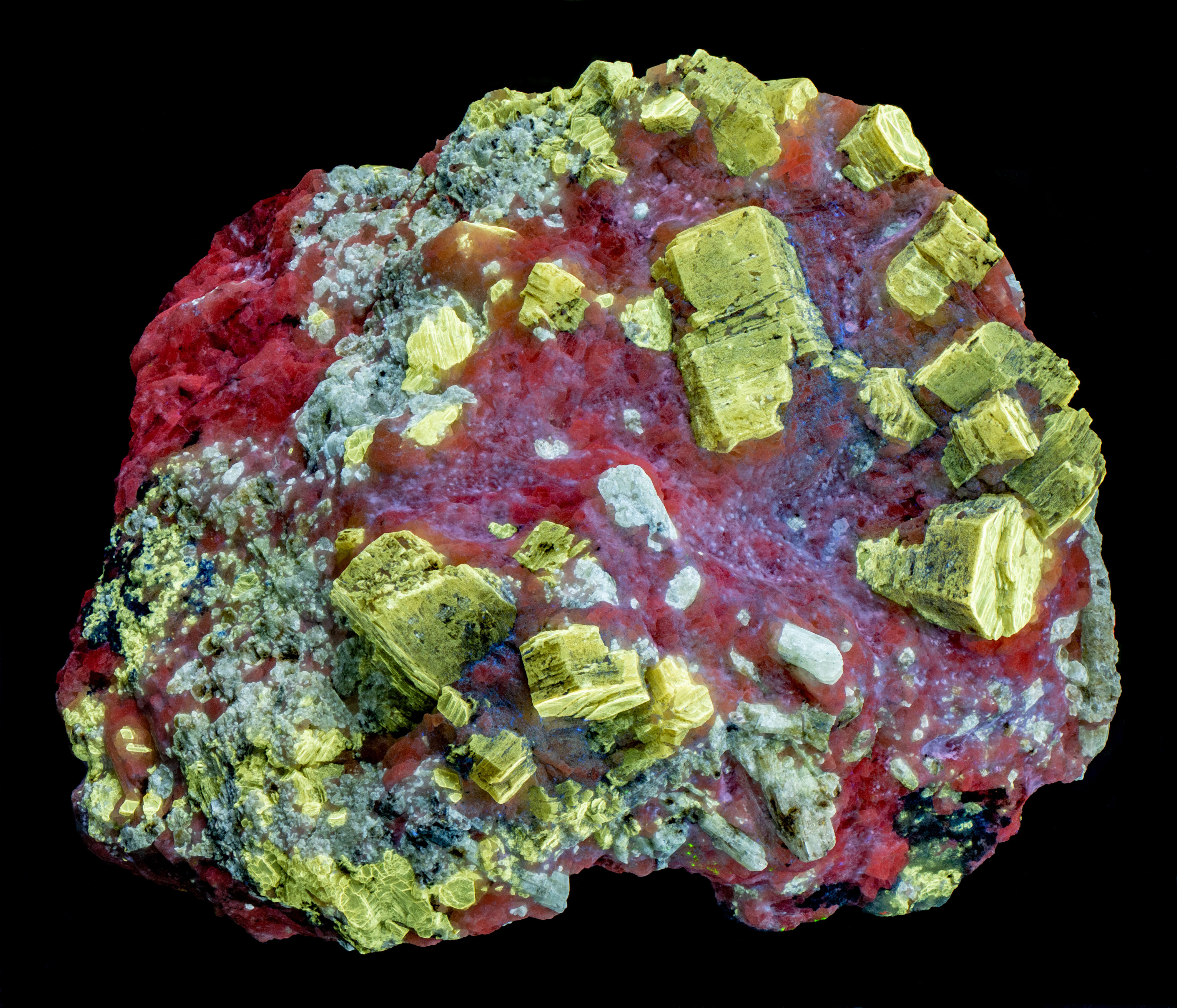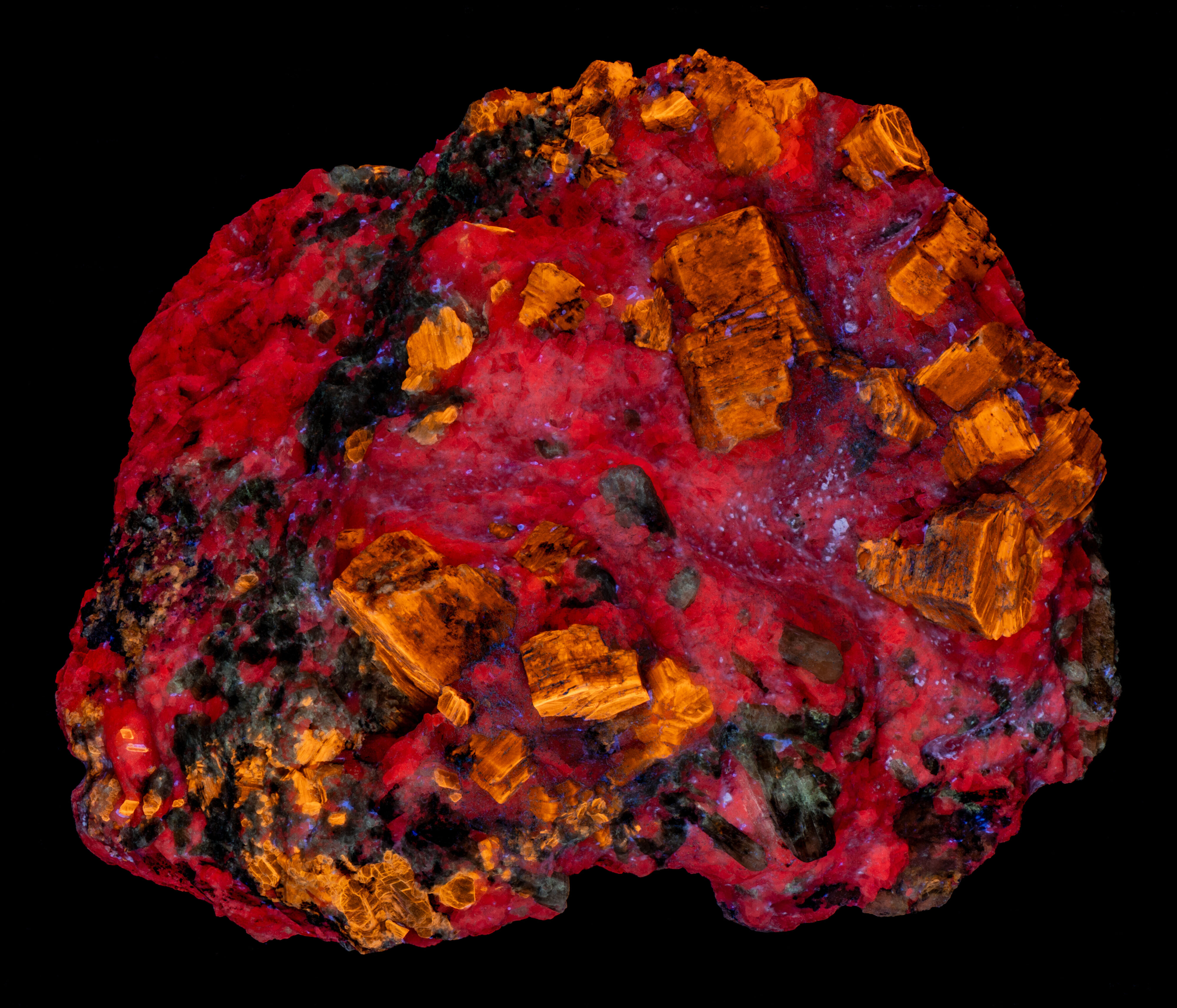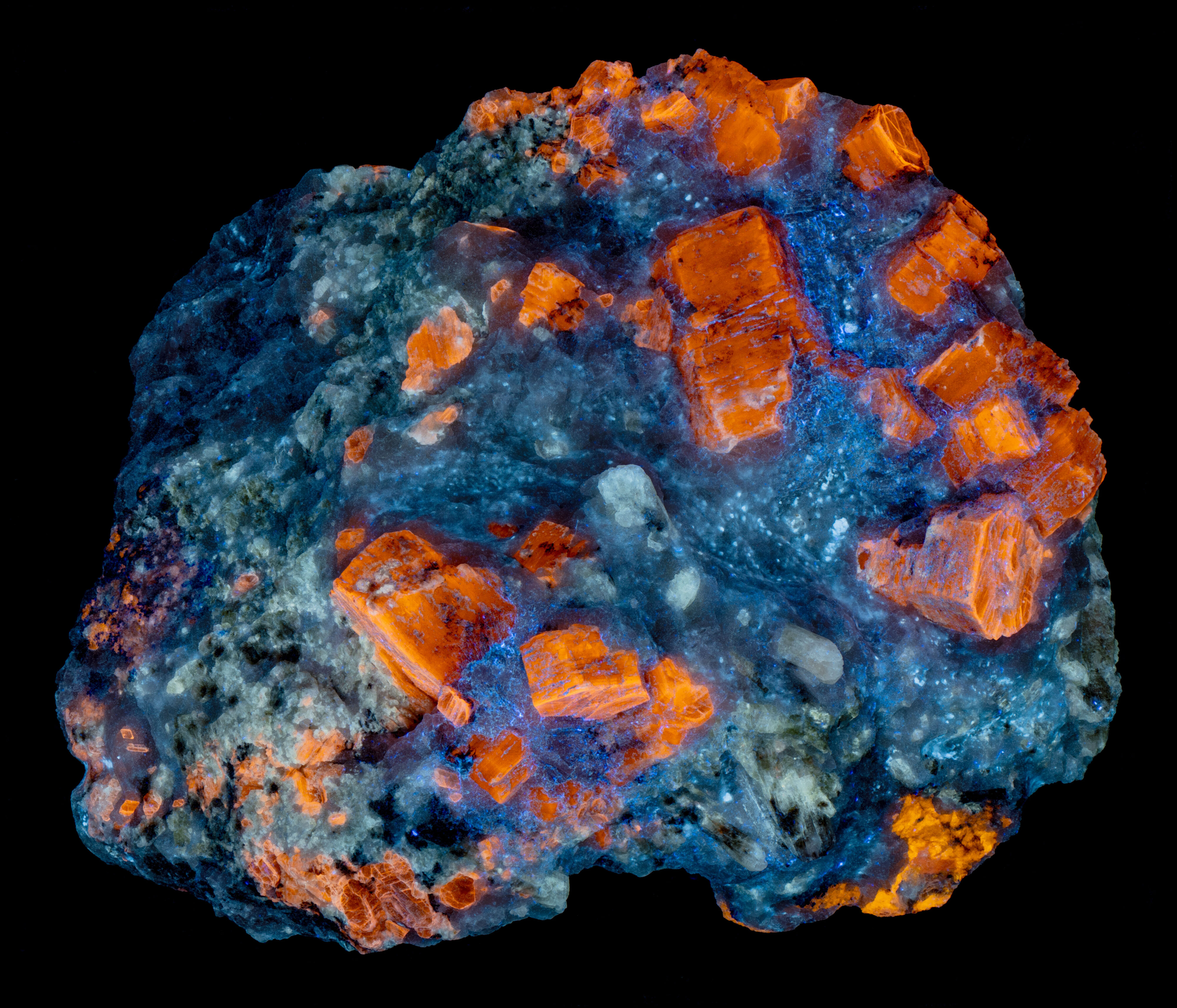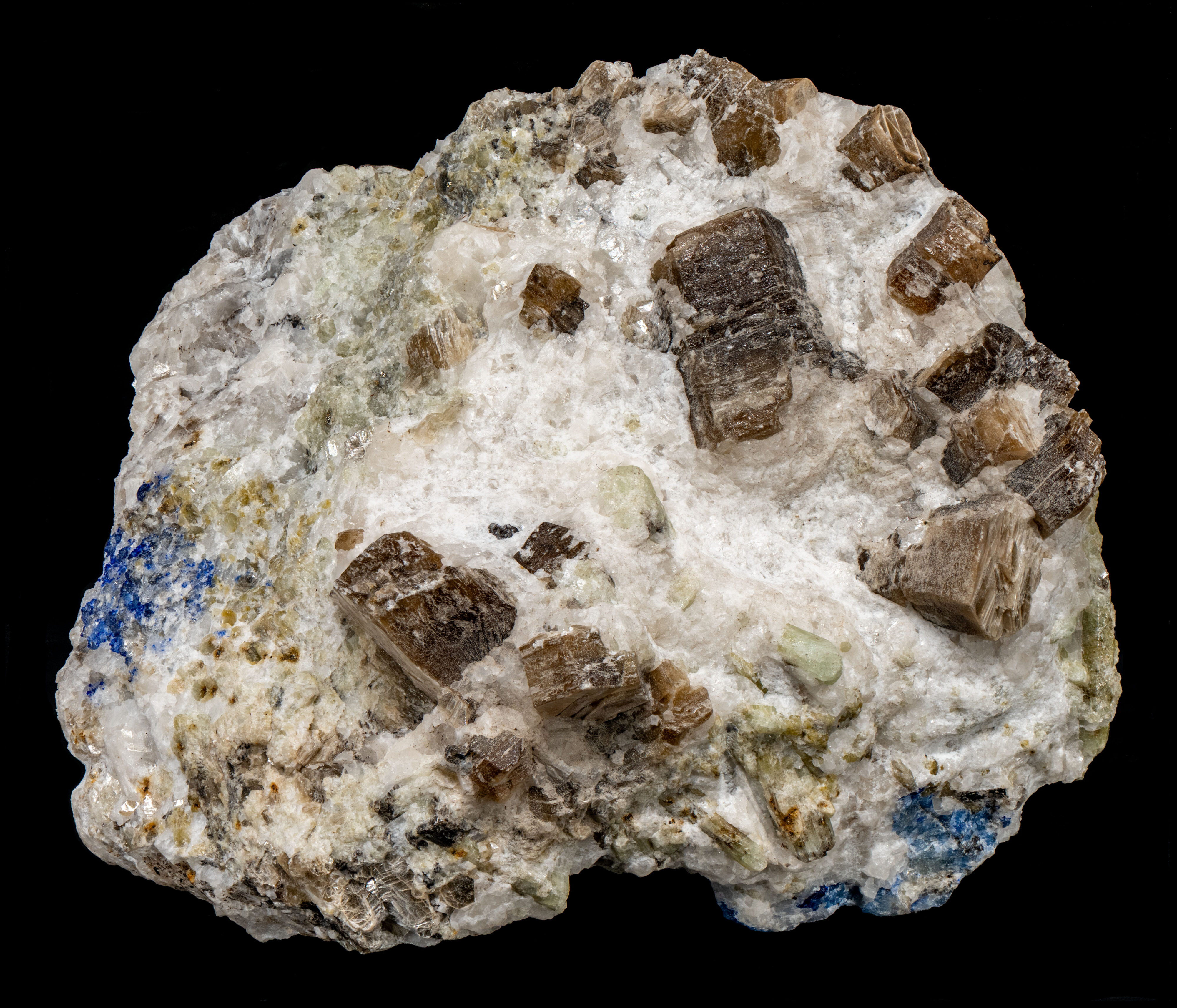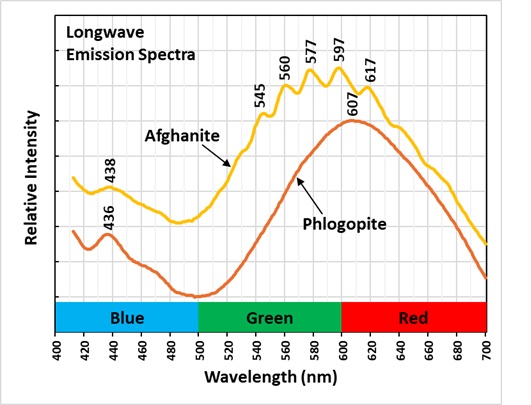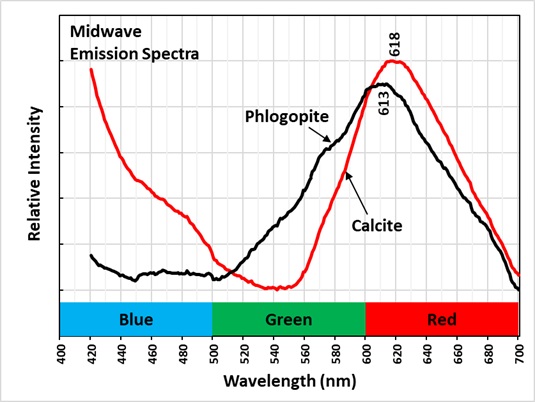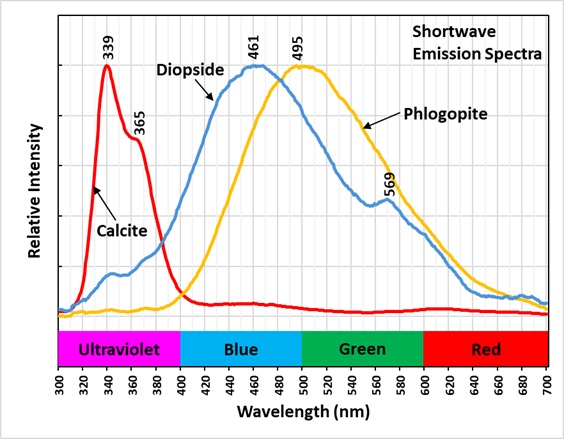Phlogopite and Other Minerals from Sar-e-Sang, Badakhshan Province, Afghanistan
Contributed by: Michael Crawford
Date: Aug 8th, 2025
Locality: Sar-e-Sang, Kuran wa Munjan District, Badakhshan, Afghanistan (See on Mindat)
Size: 8 x 10 cm
Description:
A specimen of phlogopite (KMg3(AlSi3O10)(OH)2), calcite (CaCO3), diopside (CaMgSi2O6), and afghanite ((Na,K)22Ca10(Si24Al24O96)(SO4)6Cl6) from Sar-e-Sang, Badakhshan Province, Afghanistan. The featured mineral in this specimen is phlogopite. There are several brown phlogopite crystals in the calcite matrix that are hexagonal prisms by to 2 cm long. The phlogopite crystals have very prominent cleavage perpendicular to the prism axis. It is very easy to break off very thin hexagonal plates from a crystal.
There are two varieties of phlogopite found at Sar-e-Sang. The phlogopite in this specimen fluoresces orange under longwave and midwave UV illumination. The orange fluorescence is brightest under longwave light. It fluoresces yellowish white under shortwave UV illumination. The second type of phlogopite only fluoresces yellowish white under shortwave light. The shortwave fluorescence looks the same for both types of phlogopite.
The longwave and midwave emission spectra are broad peaks with maximum around 607 nm to 613 nm. This fluorescence is likely activated by manganese replacing magnesium. The shortwave emission spectrum is also a broad peak, but its maximum is at 495 nm. The shortwave fluorescence is likely activating by titanium oxide replacing aluminum oxide in the phlogopite structure.
The longwave fluorescence of the brown phlogopite and blue afghanite looks the same in the image of longwave fluorescence. However, the emission spectra of the two minerals are very different. Afghanite fluorescence is activated by disulfide replacing chlorine and/or sulfate. Disulfide causes the vibronic peaks to be superimposed on the broad emission peak. The phlogopite peak does not have the smaller vibronic peaks.
The calcite matrix fluoresces bright red under midwave UV illumination. The midwave spectrum is a broad peak with a maximum at 618 nm that is activated by manganese replacing calcium. The red calcite fluorescence is dimmer under shortwave light. The emission spectrum shows that calcite has very bright fluorescence in the ultraviolet region activated by cerium replacing calcium. The ultraviolet fluorescence is considerably brighter than the red visible fluorescence. Cerium causes the emission spectrum to have two peaks at 339 nm and 365 nm.
Diopside only fluoresces under shortwave UV light in this specimen. The emission spectrum is a broad peak with a maximum at 461 nm. Titanium oxide is a possible activator for the fluorescence.
Summary of luminescence responses:
Phlogopite (Mindat) (RRUFF)
- Fluorescence under Longwave (365nm LED) UV light: Orange
- Fluorescence under Midwave (305nm LED) UV light: Orange
- Fluorescence under Shortwave (255nm LED) UV light: Yellow
- Fluorescence under Midwave (305nm LED) UV light: Red
- Fluorescence under Shortwave (255nm LED) UV light: Red
- Fluorescence under Shortwave (255nm LED) UV light: White
- Fluorescence under Longwave (365nm LED) UV light: Orange

